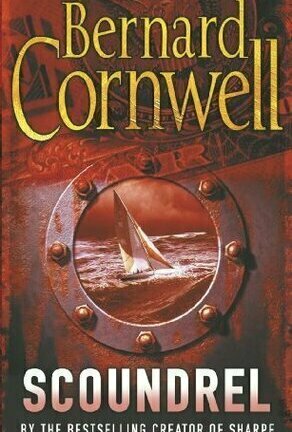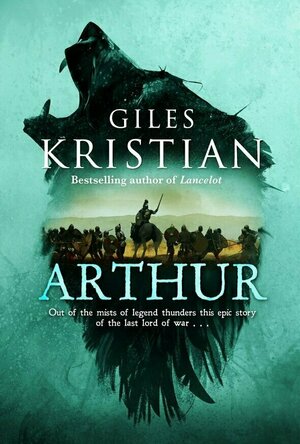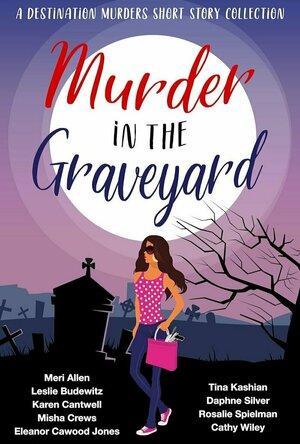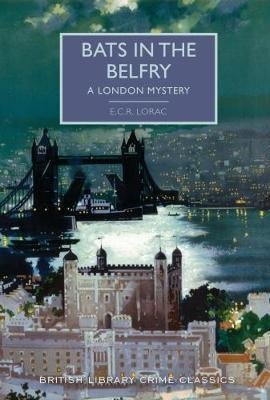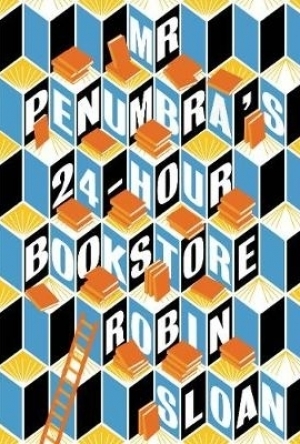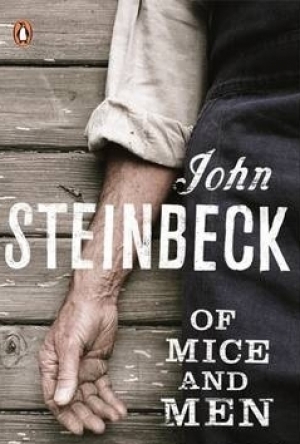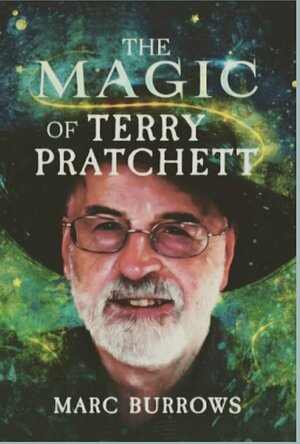Search
Search results
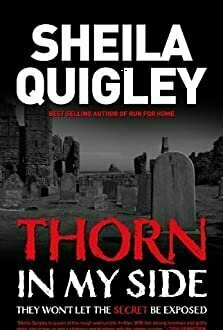
Thorn in My Side
Book
DI Mike Yorke is coming home. After three months in London, he’s looking forward to being back in...
Heather Cranmer (2721 KP) created a post
Sep 19, 2022
David McK (3623 KP) rated Scoundrel (the sailing thrillers, #5) in Books
Nov 29, 2023
It's been a long time since a book has made me this angry.
Maybe because I'm *from* Belfast, Northern Ireland and have relatives who lived through the period of history colloquially known as The Troubles (I was a teenager in the 90s, when they 'ended', and when this is set), so know exactly what the IRA and their loyalist counterparts were/are like.
It made my blood boil to read passages in this where they were treated as heroes by some in Boston (and, yes, I know it's a fiction book): surely to goodness nobody could be that naive??
Anyway, I normally like Bernard Cornwell (Author) novels.
I know he spent a bit of time here (the BBC, I believe?), before moving to the States.
His knowledge of landmarks does show.
I would have thought he would have known better, though, in how he portrays the tangled mess that is politics and history that went on in this fair isle.
Sorry, Mr Paul Shanahan: you're unlikeable as a lead character; no match to a Richard Sharpe or an Uhtred of Bebbanburg.
(his other stand-alone sailing thrillers - those I have read, at least - are all much better)
Maybe because I'm *from* Belfast, Northern Ireland and have relatives who lived through the period of history colloquially known as The Troubles (I was a teenager in the 90s, when they 'ended', and when this is set), so know exactly what the IRA and their loyalist counterparts were/are like.
It made my blood boil to read passages in this where they were treated as heroes by some in Boston (and, yes, I know it's a fiction book): surely to goodness nobody could be that naive??
Anyway, I normally like Bernard Cornwell (Author) novels.
I know he spent a bit of time here (the BBC, I believe?), before moving to the States.
His knowledge of landmarks does show.
I would have thought he would have known better, though, in how he portrays the tangled mess that is politics and history that went on in this fair isle.
Sorry, Mr Paul Shanahan: you're unlikeable as a lead character; no match to a Richard Sharpe or an Uhtred of Bebbanburg.
(his other stand-alone sailing thrillers - those I have read, at least - are all much better)
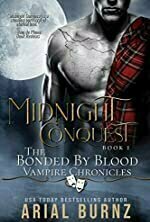
Midnight Conquest (Bonded By Blood Vampire Chronicles #1)
Book
Falling in love was not part of the plan. After thirty years of seeking my enemy, I find him... ...
Adult Historical Paranormal Romance
David McK (3623 KP) rated Arthur (The Arthurian Tales #3) in Books
Jun 30, 2024 (Updated Jun 30, 2024)
This is the final entry in Giles Kristian's 'Arthurian Tales' trilogy, set after both 'Lancelot' and 'Camelot', and now told in the third person instead of the first person view of both those former works.
It's also the first one - I believe - to so heavily rely on flashbacks, paralleling the 'now' of the story with the background to one of the main characters Beran (whose identity I, personally, found quite easy to grok early on).
As a whole, I have to say, this trilogy is one of the best retellings of the Arthurian myths I have come across although retelling, however, may be too strong a word; perhaps a better on would be re-imagining as there's no mystical Green Knight (reimagined in 'Camelot'), search for the Holy Grails (again, see 'Camelot'), or mysterious women lying in ponds and distributing swords ("that's no basis for sound government..."), but which does cover the whole Arthur/Lancelot/Guinevere love triangle (see, in particular, 'Lancelot') and the fall out thereof.
In short, all three novels are well worth a read - personally, I found I enjoyed these more than the 'Blood Eye' series by the same author.
It's also the first one - I believe - to so heavily rely on flashbacks, paralleling the 'now' of the story with the background to one of the main characters Beran (whose identity I, personally, found quite easy to grok early on).
As a whole, I have to say, this trilogy is one of the best retellings of the Arthurian myths I have come across although retelling, however, may be too strong a word; perhaps a better on would be re-imagining as there's no mystical Green Knight (reimagined in 'Camelot'), search for the Holy Grails (again, see 'Camelot'), or mysterious women lying in ponds and distributing swords ("that's no basis for sound government..."), but which does cover the whole Arthur/Lancelot/Guinevere love triangle (see, in particular, 'Lancelot') and the fall out thereof.
In short, all three novels are well worth a read - personally, I found I enjoyed these more than the 'Blood Eye' series by the same author.
Mark @ Carstairs Considers (2432 KP) rated Murder in the Graveyard in Books
Oct 16, 2025
Watch Out for the Extra Body
Just in time for Halloween, we get this fun collection of murders set in and around graveyards. In addition to the unexpected dead body or two, we also get involved in revenge, teenage parties, amnesia, family feuds, and an escaped convict. Many of these stories are set around Halloween, although a few take place at other times of the year. And yes, a couple lean into the spooky, but it always fits the story, so I didn’t mind.
Many of these authors featured their series stars. I’ve read many of those novels, so it was fun to spend time with them. For those who I haven’t met outside of these short story collections, I didn’t feel like I was missing anything with the stories we got here. Each story was fun, taking me about half an hour to read. With nine stories, we get plenty of content. I was smiling through most of them, even laughing some. And the stories kept me engaged from start to finish.
Whether you read this book now or open it in a different season of the year, you’ll enjoy these stories.
Many of these authors featured their series stars. I’ve read many of those novels, so it was fun to spend time with them. For those who I haven’t met outside of these short story collections, I didn’t feel like I was missing anything with the stories we got here. Each story was fun, taking me about half an hour to read. With nine stories, we get plenty of content. I was smiling through most of them, even laughing some. And the stories kept me engaged from start to finish.
Whether you read this book now or open it in a different season of the year, you’ll enjoy these stories.
Mayhawke (97 KP) rated Bats In The Belfry in Books
Feb 26, 2018 (Updated Feb 27, 2018)
A Cosy Crime sleeper worthy of resurrection
I’m a huge fan of Cosy Crime, I cut my grown-up reading teeth on Agatha Christie and Dorothy L Sayers, so it should be no surprise that I’m a big fan of the British Library’s inspired decision to republish lost Golden Age novels.
Fifty-one re-issues in and I’m still stunned at the number of authors who had stellar careers as crime writers, were fully inducted members of the Detection Club, and had publication lists to rival Christie’s but who, within a few years of their deaths, had just vanished from the pantheon classic crime novelists.
Such a writer was E.C.R.Lorac, author of Bats In The Belfry. In his introduction Martin Edwards describes the pseudonymous Lorac (real name Edith Caroline Rivett) as enjoying a “low-key career spanning more than a quarter of a century.” It also produced a catalogue of over seventy novels, yet, cosy crime fan that I am I had never heard of her until her book turned up on my work intranet.
Bats, British Library’s inaugural Crime Classic for 2018, is also the first of Lorac’s novels to be given the British Library treatment. It couldn’t have happened to a better book! One of the dangers of republishing books that have disappeared in the mists of time, at least if you are republishing them for the mass market, is that some of them will prove to have been ‘lost’ with good cause. Not that the writing need be poor or the plotting weak, but there are social aspects that can be critical to the development or fundamental premise of the story that change over the course of half a century. When that happens there is a danger that the reader will at best be disgruntled with a puzzle they were unlikely to be able to solve because they didn’t understand the clues they were being given, or, at worst, that the whole premise will seem beyond ludicrous to modern readers. Of the twenty or so BLCC’s I have read only one has fallen into the latter category, and whilst there have been one or two which were a bit plodding thanks to such issues they have largely been a pleasure to read, and I have been able to joyfully pit my wits against the authors’ intrinsic challenge to solve the mystery before the denouement.
Bats in the Belfry most definitely falls into this class of Crime Classic, so much so that it’s a surprise to find from Edwards that it was a bit of a non-starter when it was first published in 1937.
A failing writer, his actress wife, his ward and a selection of friends are collected one evening following the funeral of the writer’s cousin. Shortly thereafter the writer himself has vanished, his suitcase and passport left in a darkly sinister studio known variously as The Belfry, and The Morgue. The story is as dark and twisty as any you could hope for from a member of the Detection Club, and it plays nicely on themes of the time. Broken marriages, financially emasculated men, and the requisite ‘strange foreign man’ all appear, and even aarchaeology gets a look in. As the main characters sit and incautiously discuss ways to bump off someone and hide the body there is brief verbal tussle over the usefulness – and even existence of – dene holes, ancient subterranean storage areas that provided writers of the time with endless possibilities, most notably in Sayers’ The Nine Tailors. Lorac’s plotting is flawless and deceptively simplistic, and she leads you back and forth from suspect to suspect. She is brutally unsympathetic to her characters, and her writing bundles you along until you finally reach the conclusion, to discover how good you are at detecting. Or not.
Fifty-one re-issues in and I’m still stunned at the number of authors who had stellar careers as crime writers, were fully inducted members of the Detection Club, and had publication lists to rival Christie’s but who, within a few years of their deaths, had just vanished from the pantheon classic crime novelists.
Such a writer was E.C.R.Lorac, author of Bats In The Belfry. In his introduction Martin Edwards describes the pseudonymous Lorac (real name Edith Caroline Rivett) as enjoying a “low-key career spanning more than a quarter of a century.” It also produced a catalogue of over seventy novels, yet, cosy crime fan that I am I had never heard of her until her book turned up on my work intranet.
Bats, British Library’s inaugural Crime Classic for 2018, is also the first of Lorac’s novels to be given the British Library treatment. It couldn’t have happened to a better book! One of the dangers of republishing books that have disappeared in the mists of time, at least if you are republishing them for the mass market, is that some of them will prove to have been ‘lost’ with good cause. Not that the writing need be poor or the plotting weak, but there are social aspects that can be critical to the development or fundamental premise of the story that change over the course of half a century. When that happens there is a danger that the reader will at best be disgruntled with a puzzle they were unlikely to be able to solve because they didn’t understand the clues they were being given, or, at worst, that the whole premise will seem beyond ludicrous to modern readers. Of the twenty or so BLCC’s I have read only one has fallen into the latter category, and whilst there have been one or two which were a bit plodding thanks to such issues they have largely been a pleasure to read, and I have been able to joyfully pit my wits against the authors’ intrinsic challenge to solve the mystery before the denouement.
Bats in the Belfry most definitely falls into this class of Crime Classic, so much so that it’s a surprise to find from Edwards that it was a bit of a non-starter when it was first published in 1937.
A failing writer, his actress wife, his ward and a selection of friends are collected one evening following the funeral of the writer’s cousin. Shortly thereafter the writer himself has vanished, his suitcase and passport left in a darkly sinister studio known variously as The Belfry, and The Morgue. The story is as dark and twisty as any you could hope for from a member of the Detection Club, and it plays nicely on themes of the time. Broken marriages, financially emasculated men, and the requisite ‘strange foreign man’ all appear, and even aarchaeology gets a look in. As the main characters sit and incautiously discuss ways to bump off someone and hide the body there is brief verbal tussle over the usefulness – and even existence of – dene holes, ancient subterranean storage areas that provided writers of the time with endless possibilities, most notably in Sayers’ The Nine Tailors. Lorac’s plotting is flawless and deceptively simplistic, and she leads you back and forth from suspect to suspect. She is brutally unsympathetic to her characters, and her writing bundles you along until you finally reach the conclusion, to discover how good you are at detecting. Or not.
Midge (525 KP) rated Mr Penumbra's 24-hour Bookstore in Books
Dec 24, 2018
A wonderful novel, and a must-read for bibliophiles and techies (2 more)
Hilarious and very genuine lead character
Cleverly written
Imaginative And Optimistic!
I love this book. It's a refreshing, pleasant, imaginative and optimistic book about friendship and the lure of the mysterious, and among other things, it's about a bookstore! It's a definite must-read for all bibliophiles.
Mr Penumbra's 24-Hour Bookstore begins with Clay Jannon, an out-of-work web designer who has found employment at a 24-hour bookstore located in San Francisco. Although the store has very few customers, he meets a variety of strange people that frequent the shop, but who rarely buy anything. However, they borrow mysteriously coded volumes, known as the "Waybacklist," most of which are hand-made, from a secret corner of the store. His curiosity sets him on a strange journey to try to find out more about the "Waybacklist," of ancient, esoteric books.
When they make an exchange from the "Waybacklist," Clay must record transaction details into an old logbook, including personal information about each customer, such as their appearance and state of mind. When the shop is empty, Clay busies himself by creating a computerised model of the bookstore in 3D. By identifying each of his customers by a different colour in the model, he is able to see a pattern developing and becomes convinced that the customers and Penumbra himself are members of a secret cult.
With two computer geek friends, one an old school friend, Neel, and the other a potential customer he met in the bookstore, Kat, who becomes his girlfriend, Clay sets out on a quest to learn the carefully kept secrets of the bookstore. When they bring their findings to Mr Penumbra, they discover the bookstore's secrets extend further than they ever imagined.
Clay, the main character, is exactly the kind of lead you want in this type of novel. He is constantly clueless though he tries hard, he is absolutely hilarious and very genuine. There are many different secondary characters regularly being introduced, but the book is so cleverly written that they never seem unnecessary. There is a lot of different levels of interaction between them, that I really liked.
There is an amazing use of different technologies in this book, however despite all the Google, Amazon, Kindle and the computer references, the true emphasis of the novel is on the people, and that is why I found the book so charming and bewitching. The younger characters are keen and enthusiastic, and you can identify with their search for connection and knowledge. The mix of foisty old books and cutting-edge technology is captivating.
If you prefer villains in your novels then this book is not for you. There is no evil in this book, and everyone that the narrator meets becomes a friend. I couldn't really guess how this book would end but I loved the way the story was concluded. The following quote is actually the last paragraph in the book, but it describes the mystery and the wonder of the whole book, to perfection.
"A man walking fast down a dark lonely street. Quick steps and hard breathing, all wonder and need. A bell above a door and the tinkle it makes. A clerk and a ladder and warm golden light, and then: the right book exactly, at exactly the right time."
Enthralling and fun to read, this novel, with its unique twists and turns of plot, left me feeling very satisfied.
Mr Penumbra's 24-Hour Bookstore has inspired me to read other novels by Robin Sloan.
Mr Penumbra's 24-Hour Bookstore begins with Clay Jannon, an out-of-work web designer who has found employment at a 24-hour bookstore located in San Francisco. Although the store has very few customers, he meets a variety of strange people that frequent the shop, but who rarely buy anything. However, they borrow mysteriously coded volumes, known as the "Waybacklist," most of which are hand-made, from a secret corner of the store. His curiosity sets him on a strange journey to try to find out more about the "Waybacklist," of ancient, esoteric books.
When they make an exchange from the "Waybacklist," Clay must record transaction details into an old logbook, including personal information about each customer, such as their appearance and state of mind. When the shop is empty, Clay busies himself by creating a computerised model of the bookstore in 3D. By identifying each of his customers by a different colour in the model, he is able to see a pattern developing and becomes convinced that the customers and Penumbra himself are members of a secret cult.
With two computer geek friends, one an old school friend, Neel, and the other a potential customer he met in the bookstore, Kat, who becomes his girlfriend, Clay sets out on a quest to learn the carefully kept secrets of the bookstore. When they bring their findings to Mr Penumbra, they discover the bookstore's secrets extend further than they ever imagined.
Clay, the main character, is exactly the kind of lead you want in this type of novel. He is constantly clueless though he tries hard, he is absolutely hilarious and very genuine. There are many different secondary characters regularly being introduced, but the book is so cleverly written that they never seem unnecessary. There is a lot of different levels of interaction between them, that I really liked.
There is an amazing use of different technologies in this book, however despite all the Google, Amazon, Kindle and the computer references, the true emphasis of the novel is on the people, and that is why I found the book so charming and bewitching. The younger characters are keen and enthusiastic, and you can identify with their search for connection and knowledge. The mix of foisty old books and cutting-edge technology is captivating.
If you prefer villains in your novels then this book is not for you. There is no evil in this book, and everyone that the narrator meets becomes a friend. I couldn't really guess how this book would end but I loved the way the story was concluded. The following quote is actually the last paragraph in the book, but it describes the mystery and the wonder of the whole book, to perfection.
"A man walking fast down a dark lonely street. Quick steps and hard breathing, all wonder and need. A bell above a door and the tinkle it makes. A clerk and a ladder and warm golden light, and then: the right book exactly, at exactly the right time."
Enthralling and fun to read, this novel, with its unique twists and turns of plot, left me feeling very satisfied.
Mr Penumbra's 24-Hour Bookstore has inspired me to read other novels by Robin Sloan.
Becs (244 KP) rated Of Mice and Men in Books
Oct 2, 2019
Contains spoilers, click to show
Of Mice and Men by John Steinbeck, a (somewhat) great historical fiction novel. I was just appalled by how slow the middle of the book was. I was so excited to read this book, as I’ve heard such great things about it. When I started, it was a little bumpy but as I kept reading, the road just kept becoming almost unbearable to continue. The ending though, spot on and definitely kicked my attention back into place. In all aspects, Of Mice and Men deserves a solid four gold stars. Reasons why below.
Genre: Literary classic, historical fiction
Audience: I definitely recommend at least a high schooler or up to read it. As it’s a little controversial and a bit harder of a read for a younger crowd.
Difficulty Reading: I almost put this down to never pick up and read again. I was about a millimeter away from doing it. But I have a thing against never finishing a book or DNF. If I’m going to pick something up and start reading it, I HAVE TO finish it, something about having an unfinished book doesn’t sit right with me. So, the answer is yes. This was a bit more of a difficult read. Now that it’s finished, I’m glad I stuck through and read the rest of the novel.
Insights: John Steinbeck is a great author and writer. I’ve read a few of his other novels and have loved them. Of Mice and Men just does not compare to the others. Maybe it’s the way that the characters speak. Maybe it’s the topic. Maybe it’s just Steinbeck lost touch with his writing when creating Of Mice and Men. Who knows, apparently some think that this novel is a piece of art. I mean, it’s still being sold nationwide. That must mean it’s somewhat good, right?
Ah-Ha Moment: When I found out that Lennie has a bit of a mental handicap issue. (This honestly sounds so bad in writing but I’m not trying to be rude about people who are mentally handicapped. I use to work as a caretaker for them and I loved it.) To continue on. You typically don’t see this style of character in this novels era. It was refreshing and different from other literary classic novels.
***SPOILERS AHEAD***
Favorite Quotes: “Trouble with mice is you always kill ’em. ” – Honestly, this is a perfect short, one sentence summary of the novel. If you don’t want to read Of Mice and Men, what happens is: you have George and Lennie, always traveling together. Lennie is mentally handicapped and likes to pet soft things. He gets in trouble in Weed by touching a female’s dress and not letting go when she screams. They run and come to find work bucking barley. Here, Lennie kills a newborn pup then kills Curley’s wife. George shoots Lennie in the back of the head and the novel ends.
***END OF SPOILERS***
“Guys like us, that work on ranches, are the loneliest guys in the world. They got no family. They don’t belong no place. They come to a ranch an’ work up a stake, and the first thing you know they’re poundin’ their tail on some other ranch. They ain’t got nothing to look ahead to.” – I mean, you’re not wrong George. Ranchhands are typically pretty lonely, especially in those olden days.
What will you gain: A love-hate relationship for this novel. Seriously. I love it so much I gave it four gold stars. But I hate it so much because man, it was a bit of a bore.
“Maybe ever’body in the whole damn world is scared of each other.”
Genre: Literary classic, historical fiction
Audience: I definitely recommend at least a high schooler or up to read it. As it’s a little controversial and a bit harder of a read for a younger crowd.
Difficulty Reading: I almost put this down to never pick up and read again. I was about a millimeter away from doing it. But I have a thing against never finishing a book or DNF. If I’m going to pick something up and start reading it, I HAVE TO finish it, something about having an unfinished book doesn’t sit right with me. So, the answer is yes. This was a bit more of a difficult read. Now that it’s finished, I’m glad I stuck through and read the rest of the novel.
Insights: John Steinbeck is a great author and writer. I’ve read a few of his other novels and have loved them. Of Mice and Men just does not compare to the others. Maybe it’s the way that the characters speak. Maybe it’s the topic. Maybe it’s just Steinbeck lost touch with his writing when creating Of Mice and Men. Who knows, apparently some think that this novel is a piece of art. I mean, it’s still being sold nationwide. That must mean it’s somewhat good, right?
Ah-Ha Moment: When I found out that Lennie has a bit of a mental handicap issue. (This honestly sounds so bad in writing but I’m not trying to be rude about people who are mentally handicapped. I use to work as a caretaker for them and I loved it.) To continue on. You typically don’t see this style of character in this novels era. It was refreshing and different from other literary classic novels.
***SPOILERS AHEAD***
Favorite Quotes: “Trouble with mice is you always kill ’em. ” – Honestly, this is a perfect short, one sentence summary of the novel. If you don’t want to read Of Mice and Men, what happens is: you have George and Lennie, always traveling together. Lennie is mentally handicapped and likes to pet soft things. He gets in trouble in Weed by touching a female’s dress and not letting go when she screams. They run and come to find work bucking barley. Here, Lennie kills a newborn pup then kills Curley’s wife. George shoots Lennie in the back of the head and the novel ends.
***END OF SPOILERS***
“Guys like us, that work on ranches, are the loneliest guys in the world. They got no family. They don’t belong no place. They come to a ranch an’ work up a stake, and the first thing you know they’re poundin’ their tail on some other ranch. They ain’t got nothing to look ahead to.” – I mean, you’re not wrong George. Ranchhands are typically pretty lonely, especially in those olden days.
What will you gain: A love-hate relationship for this novel. Seriously. I love it so much I gave it four gold stars. But I hate it so much because man, it was a bit of a bore.
“Maybe ever’body in the whole damn world is scared of each other.”
Lottie disney bookworm (1056 KP) rated The Magic of Terry Pratchett in Books
May 27, 2020
As a child who was brought up in a house of Discworld stories, with a stepfather who (still) proudly displays the Clarecraft Rincewind figurine which bears an uncanny likeness to him, and a mother who has a matching Nanny Ogg (it bears no likeness but let’s just say encompasses a couple of her characteristics), this was an ARC that I was frankly desperate to read. I have to thank Netgalley and Marc Burrows for granting me this opportunity. My opinions are enthusiastic, and entirely my own.
As a 32 year old female, mother and accountant you may be forgiven for expecting my book reviews to be based around chick-lit or classical novels and, although it is the case that I own several very well-read copies of Pride & Prejudice, I am wholly a child of the sci-fi/fantasy genre. Terry Pratchett novels sit alongside George RR Martin, Terry Brooks, David Eddings and Ursula Le Guin in my house; I owned and loved Discworld computer games and probably know every word to the film Labyrinth.
It could therefore be said that I would find Marc Burrow’s biography fascinating regardless: however, I am ashamed to say that, before reading this book, I knew very little about the life of the author whose books I admire so much.
Burrows structures his writing predictably enough, running through the life of Terry Pratchett chronologically, from his working-class upbringing; his career in journalism; the progression in popularity of his novels; his knighthood all the way up to his untimely death from Alzheimer’s. However, this is where an affiliation to any standard biography ends.
It is immediately apparent that Marc Burrows is an avid Terry Pratchett fan, even without reading his foreword, due to the inclusion of footnotes: a writing style which is synonymous with Pratchett. This allows Burrows, as it did with Pratchett, to provide little notes and details which cannot be in the main text without limiting the reading experience. It also allows both authors to inject a large amount of humour into their writing.
It should also be mentioned that no book has gripped me from the introduction in a long time, although I am fairly sure no other book would use the word “crotch” before we even reach Chapter One!
‘The Magic of Terry Pratchett’ is a clever, well-informed biography which perfectly encompasses the humour of the Discworld creator whilst educating the reader of his journey to becoming the icon that he is today. I have no doubt that this has been a labour of love for Marc Burrows: when the kindle says you have 20 minutes reading time left and you have reached the bibliography, you know that a whole lot of research has been done!
Sir Terry also had the tendency to embellish his stories and this is a factor Burrows does not try to hide; highlighting when facts don't quite add up and almost analysing the situation to try and discern the truth. This was such a refreshing approach to a biography: the wool is not pulled over the eyes of the reader, nor the subject blindly believed for convenience.
It is important to note that this book transgresses the existence of Discworld and “the business with the elephant” and encompasses all of Sir Terry’s work: from short stories in the local paper to his TV documentary on assisted death.
The reader will also learn of the involvement of Rhianna Pratchett in her father’s work and discover that the “man in the hat” was not always the easiest man to work with.
I am going to need at least 3 copies upon release- can we preorder?
As a 32 year old female, mother and accountant you may be forgiven for expecting my book reviews to be based around chick-lit or classical novels and, although it is the case that I own several very well-read copies of Pride & Prejudice, I am wholly a child of the sci-fi/fantasy genre. Terry Pratchett novels sit alongside George RR Martin, Terry Brooks, David Eddings and Ursula Le Guin in my house; I owned and loved Discworld computer games and probably know every word to the film Labyrinth.
It could therefore be said that I would find Marc Burrow’s biography fascinating regardless: however, I am ashamed to say that, before reading this book, I knew very little about the life of the author whose books I admire so much.
Burrows structures his writing predictably enough, running through the life of Terry Pratchett chronologically, from his working-class upbringing; his career in journalism; the progression in popularity of his novels; his knighthood all the way up to his untimely death from Alzheimer’s. However, this is where an affiliation to any standard biography ends.
It is immediately apparent that Marc Burrows is an avid Terry Pratchett fan, even without reading his foreword, due to the inclusion of footnotes: a writing style which is synonymous with Pratchett. This allows Burrows, as it did with Pratchett, to provide little notes and details which cannot be in the main text without limiting the reading experience. It also allows both authors to inject a large amount of humour into their writing.
It should also be mentioned that no book has gripped me from the introduction in a long time, although I am fairly sure no other book would use the word “crotch” before we even reach Chapter One!
‘The Magic of Terry Pratchett’ is a clever, well-informed biography which perfectly encompasses the humour of the Discworld creator whilst educating the reader of his journey to becoming the icon that he is today. I have no doubt that this has been a labour of love for Marc Burrows: when the kindle says you have 20 minutes reading time left and you have reached the bibliography, you know that a whole lot of research has been done!
Sir Terry also had the tendency to embellish his stories and this is a factor Burrows does not try to hide; highlighting when facts don't quite add up and almost analysing the situation to try and discern the truth. This was such a refreshing approach to a biography: the wool is not pulled over the eyes of the reader, nor the subject blindly believed for convenience.
It is important to note that this book transgresses the existence of Discworld and “the business with the elephant” and encompasses all of Sir Terry’s work: from short stories in the local paper to his TV documentary on assisted death.
The reader will also learn of the involvement of Rhianna Pratchett in her father’s work and discover that the “man in the hat” was not always the easiest man to work with.
I am going to need at least 3 copies upon release- can we preorder?
